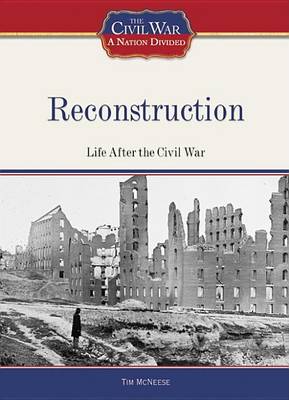Civil War: A Nation Divided
5 total works
When war broke out between the North and the South in 1861, the United States was still a growing nation, living with traditions of the past and beginning to improve life with new technological advances of the future. The Civil War was a conflict during which both sides experimented with old and new methods, machines, and weapons - all of which were dependent upon developing technologies. Exploding shells, hot air balloons, anesthesia, land mines, submarines, and the telegraph are a few of the unique technologies that Union and Confederate leaders used in their struggle to win the war. ""Technology and the Civil War"" explains the role of technology for Americans before, during, and after the conflict.
In 1861, Americans became engaged in a bloody civil war in which more than 600,000 Americans lost their lives. The conflict began after several states withdrew from the Union. ""Causes of the Civil War: The Differences Between the North and South"" examines the sectional rivalries that surfaced in the early 19th century and intensified in the decades leading up to the war. Two distinct American societies had developed: one industrialized, urban, and relying upon free labor, and the other rural, agrarian, and built upon slave labor. As the United States expanded its territory westward, the differences in the two sections fueled the debate over slavery and its use. In the 1840s and 1850s, tensions escalated, resulting in the secession of the Southern states and the declaration of war between the Union and the Confederates.
During Reconstruction, the nation sought to reestablish itself in the aftermath of the Civil War, overcome regional politics, determine how the states of the Confederacy should be readmitted into the Union, and redefine the political, social, and economic realities of the nation's four million blacks.
Though historians could name hundreds of political and military leaders who left their mark during the Civil War, ""Civil War Leaders"" presents the lives and contributions made by the era's greatest leaders, representatives of both sides in the conflict, Northerners and Southerners alike. While their efforts may, at times, have pitted one against the other, their legacies represent a patchwork of American biographies. Each pursued goals that were set by the course of the nation as it became increasingly fractured. Through secession and the bloodiest war to date in American history, the United States emerged on the other side of the conflict once again united, its weaknesses healed, and its future more secure than it had been before the ordinance of war briefly ruled the American landscape. Learn about the intriguing leaders of the Civil War era, their convictions, and their decisions during this tumultuous time in American history.
For four straight years, the people of the United States fought against one another in a brutal civil war that resulted in the deaths of approximately 620,000 men in uniform. Between 1861 and 1865, more Americans died during this bloody conflict than in all other American wars combined. With fighting across the South and in Maryland, Pennsylvania, Missouri, and Kentucky, some battles proved to be key in the overall outcome of the war. The clashes between the Union and the Confederates are nearly countless, ranging from minor skirmishes to full-scale engagements that sometimes stretched across battlefields measuring miles in length. Sometimes, these battles displayed the limits of a man's endurance and revealed the honorable manhood of the armies. The story of these battles in ""Civil War Battles"" is the story of the men who risked their lives for a personal cause and those who made the ultimate sacrifice.


